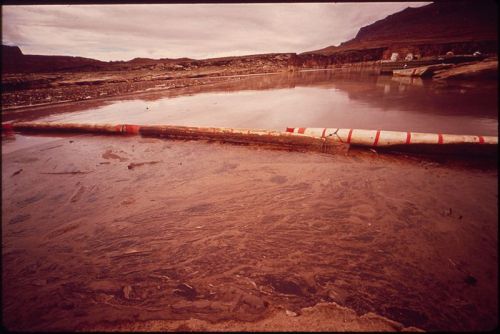Desmog Blog recaps the past few days:
Cleanup efforts are currently underway in three separate oil spills that have occurred in the last ten days.So, is this just a string of bad luck? Hardly. What’s happening is that the administration is making a decision on the Keystone XL pipeline soon and that puts pipeline news in the spotlight. The fact is that these sort of incidents are incredibly common.
On March 27th, a train carrying Canadian tar sands dilbit jumped the rails in rural Minnesota spilling an estimated 30,000 gallons of black gold onto the countryside.
Two days later a pipeline ruptured in the town of Mayflower, Arkansas, sending a river of Albertan tar sands crude gurgling down residential streets. And news is just breaking about a Shell oil spill that occurred the same day in Texas that dumped an estimated 700 barrels, including at least 60 barrels of oil into a waterway that leads to the Gulf of Mexico (stay tuned for more on that).
This week a Canadian Pacific freight train loaded with oil derailed, spilling its cargo over the Northwest Ontario countryside. Originally reported as a leak of 600 liters, the CBC reported on Thursday that the estimated volume of the spill has increased to 63,000 liters.
Over the last 20 years, pipeline incidents have caused over $6.3 billion in property damages. On average during this time period there were more than 250 pipeline incidents per year, without a single year where that number dropped below 220. During that time, more than 2.5 million barrels of hazardous liquids were spilled and little more than half of those spilled amounts were recovered in cleanup efforts.Let’s see… 250 per year… Yup, looks like the past ten days were actually a good week and a half, by oil safety standards. I wouldn’t be surprised if someone somewhere didn’t get some sort of a plaque for it.
These incidents happen all the damned time and usually only get covered by local news. Billions in property damage, untold environmental damage, and toxic dangers to peoples’ health — more than once a week on average, every week, every month, every year, year after year after year. This is normal. Hell, this is better than normal. We don’t have to worry about when the next environmental disaster will hit — America’s just one big, unreported environmental disaster. One that never ends because we’re too freakin’ stupid to end it.
Not only can’t Keystone XL possibly be safe, it would just serve to make us more dependent on a source of energy that’s killing us. That alone should be enough to reject it.
[photo via Wikimedia Commons]






